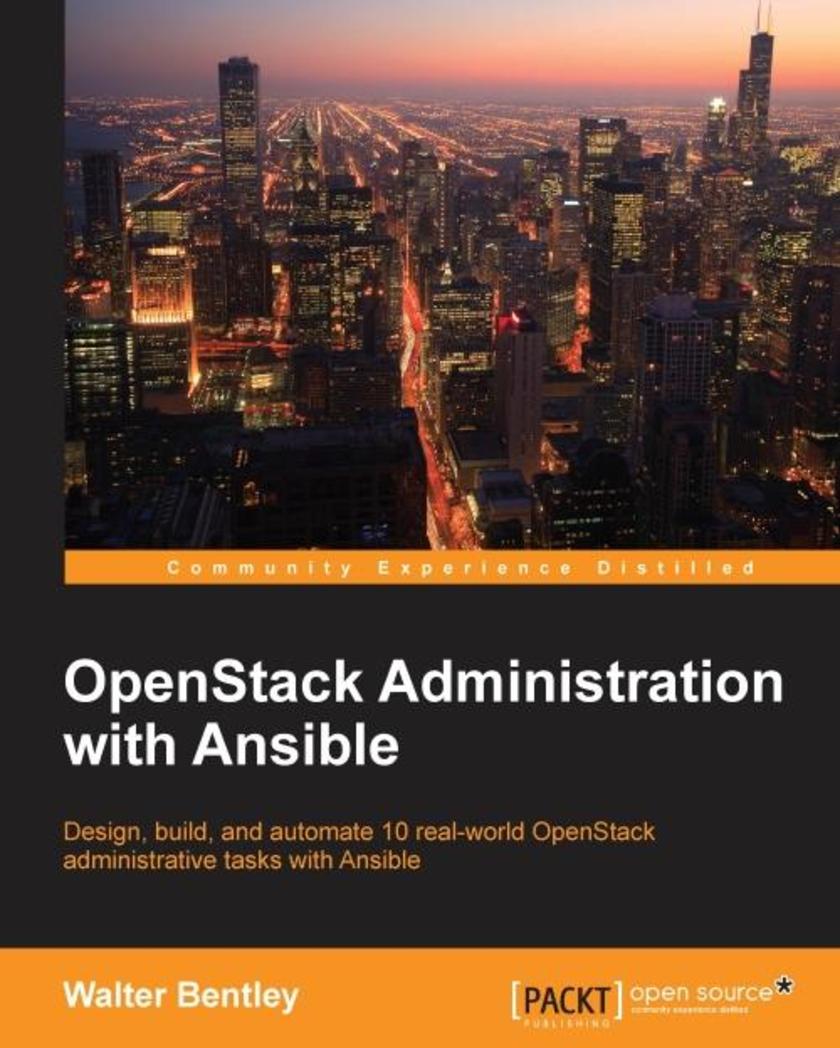
OpenStack Administration with Ansible
¥63.21
Design, build, and automate 10 real-world OpenStack administrative tasks with AnsibleAbout This BookAutomate real-world OpenStack cloud operator administrative tasksConstruct a collection of automation code to save time on managing your OpenStack cloudUse this step-by-step tutorial to automate such tasks with AnsibleWho This Book Is ForIf you are an OpenStack-based cloud operator and/or infrastructure administrator and are interested in automating administrative functions, then this book is exactly what you are looking for. Having a functioning OpenStack environment is helpful, but most certainly not necessary.What You Will LearnEfficiently execute OpenStack administrative tasksFamiliarize yourself with how Ansible works and assess the defined best practicesCreate Ansible playbooks and rolesAutomate tasks to customize your OpenStack cloudReview OpenStack automation considerations when automating administrative tasksExamine and automate advanced OpenStack tasks and designated use casesGet a high-level overview of OpenStack and the current production-ready projectsDeep dive into OpenStack CLI tools and find out how to use themIn DetailMost organizations are seeking methods to improve business agility because they have realized just having a cloud is not enough. Being able to improve application deployments, reduce infrastructure downtime, and eliminate daily manual tasks can only be accomplished through some sort of automation.Packed with real-world OpenStack administrative tasks, this book will walk you through working examples and explain how these tasks can be automated using one of the most popular open source automation tools—Ansible.We will start with a brief overview of OpenStack and Ansible and highlight some best practices. Each chapter will provide an introduction to handling various Cloud Operator administration tasks such as creating multiple users/tenants, setting up Multi-Tenant Isolation, customizing your clouds quotas, taking instance snapshots, evacuating compute hosts for maintenance, and running cloud health checks, and a step-by-step tutorial on how to automate these tasks with Ansible.Style and approachThis easy-to-follow reference guide is packed with examples of real-world OpenStack administration tasks; each task is explained in detail and then subsequently turned into automation code.
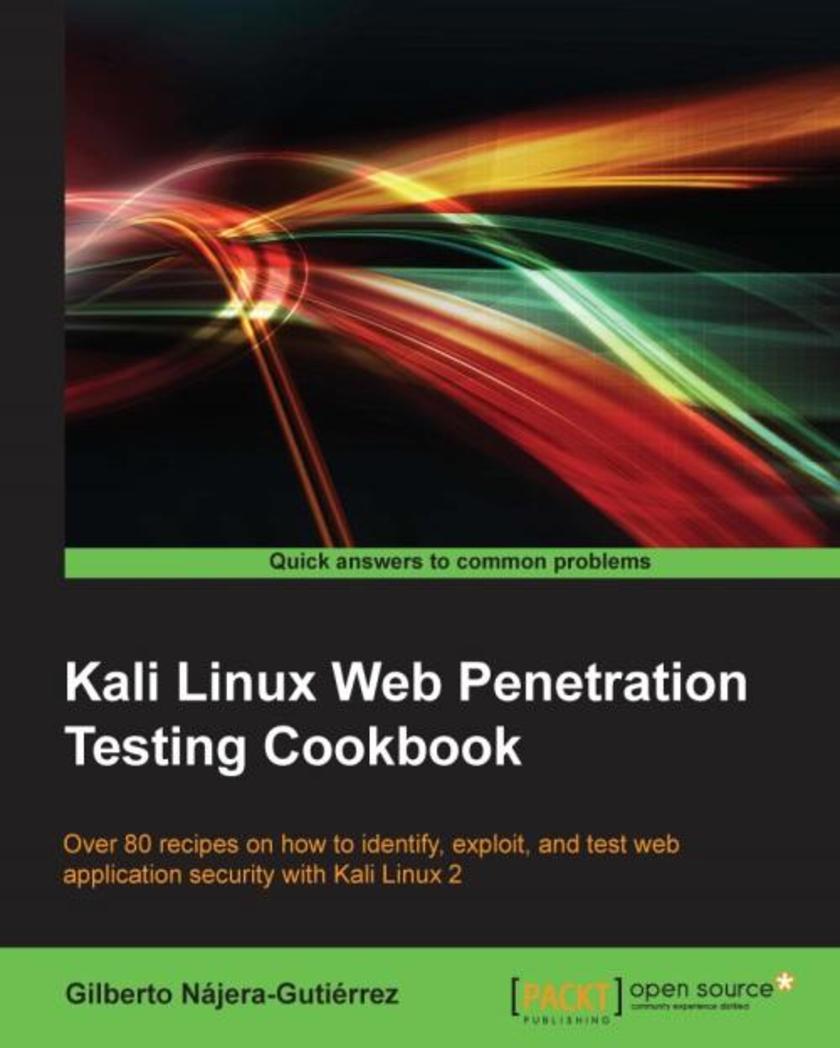
Kali Linux Web Penetration Testing Cookbook
¥90.46
Over 80 recipes on how to identify, exploit, and test web application security with Kali Linux 2About This BookFamiliarize yourself with the most common web vulnerabilities a web application faces, and understand how attackers take advantage of themSet up a penetration testing lab to conduct a preliminary assessment of attack surfaces and run exploitsLearn how to prevent vulnerabilities in web applications before an attacker can make the most of itWho This Book Is ForThis book is for IT professionals, web developers, security enthusiasts, and security professionals who want an accessible reference on how to find, exploit, and prevent security vulnerabilities in web applications. You should know the basics of operating a Linux environment and have some exposure to security technologies and tools.What You Will LearnSet up a penetration testing laboratory in a secure wayFind out what information is useful to gather when performing penetration tests and where to look for itUse crawlers and spiders to investigate an entire website in minutesDiscover security vulnerabilities in web applications in the web browser and using command-line toolsImprove your testing efficiency with the use of automated vulnerability scannersExploit vulnerabilities that require a complex setup, run custom-made exploits, and prepare for extraordinary scenariosSet up Man in the Middle attacks and use them to identify and exploit security flaws within the communication between users and the web serverCreate a malicious site that will find and exploit vulnerabilities in the user's web browserRepair the most common web vulnerabilities and understand how to prevent them becoming a threat to a site's securityIn DetailWeb applications are a huge point of attack for malicious hackers and a critical area for security professionals and penetration testers to lock down and secure. Kali Linux is a Linux-based penetration testing platform and operating system that provides a huge array of testing tools, many of which can be used specifically to execute web penetration testing.This book will teach you, in the form step-by-step recipes, how to detect a wide array of vulnerabilities, exploit them to analyze their consequences, and ultimately buffer attackable surfaces so applications are more secure, for you and your users.Starting from the setup of a testing laboratory, this book will give you the skills you need to cover every stage of a penetration test: from gathering information about the system and the application to identifying vulnerabilities through manual testing and the use of vulnerability scanners to both basic and advanced exploitation techniques that may lead to a full system compromise. Finally, we will put this into the context of OWASP and the top 10 web application vulnerabilities you are most likely to encounter, equipping you with the ability to combat them effectively. By the end of the book, you will have the required skills to identify, exploit, and prevent web application vulnerabilities.Style and approachTaking a recipe-based approach to web security, this book has been designed to cover each stage of a penetration test, with de*ions on how tools work and why certain programming or configuration practices can become security vulnerabilities that may put a whole system, or network, at risk. Each topic is presented as a sequence of tasks and contains a proper explanation of why each task is performed and what it accomplishes.
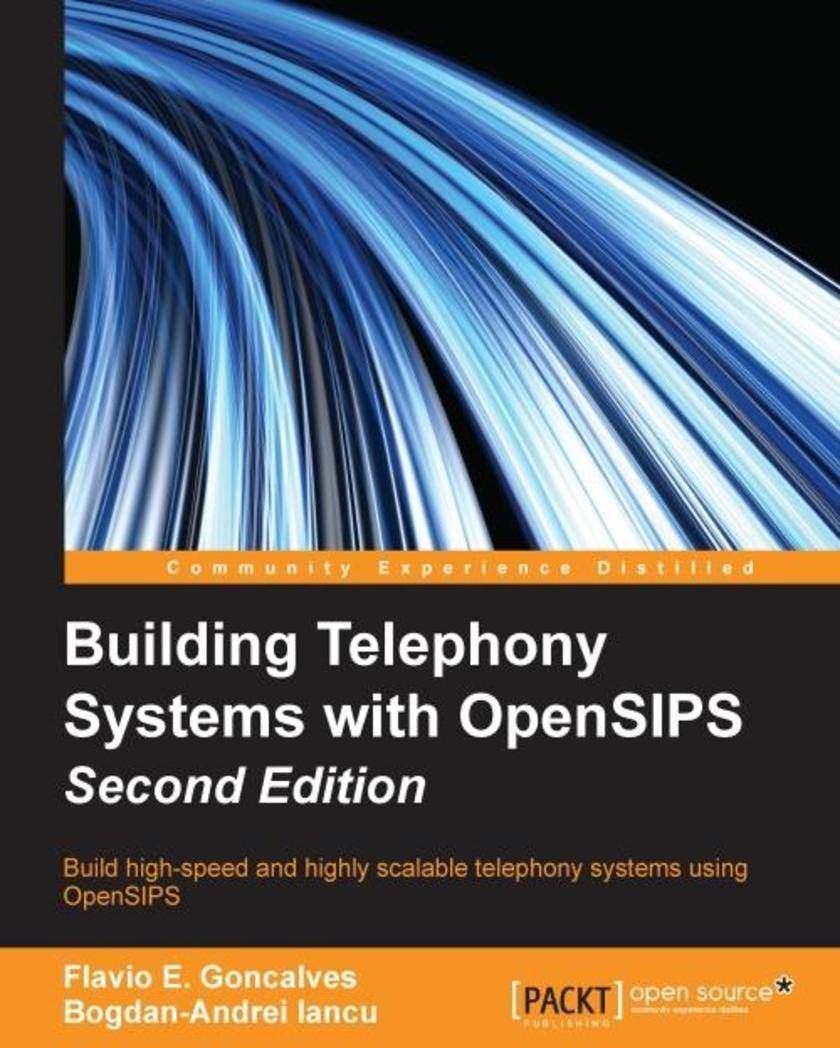
Building Telephony Systems with OpenSIPS - Second Edition
¥80.65
Build high-speed and highly scalable telephony systems using OpenSIPSAbout This BookInstall and configure OpenSIPS to authenticate, route, bill, and monitor VoIP callsGain a competitive edge using the most scalable VoIP technologyDiscover the latest features of OpenSIPS with practical examples and case studiesWho This Book Is ForIf you want to understand how to build a SIP provider from scratch using OpenSIPS, then this book is ideal for you. It is beneficial for VoIP providers, large enterprises, and universities. This book will also help readers who were using OpenSER but are now confused with the new OpenSIPS.Telephony and Linux experience will be helpful to get the most out of this book but is not essential. Prior knowledge of OpenSIPS is not assumed.What You Will LearnLearn to prepare and configure a Linux system for OpenSIPSFamiliarise yourself with the installation and configuration of OpenSIPSUnderstand how to set a domain and create users/extensionsConfigure SIP endpoints and make calls between themMake calls to and from the PSTN and create access control lists to authorize callsInstall a graphical user interface to simplify the task of provisioning user and system informationImplement an effective billing system with OpenSIPSMonitor and troubleshoot OpenSIPS to keep it running smoothlyIn DetailOpenSIPS is a multifunctional, multipurpose signalling SIP server. SIP (Session Initiation Protocol) is nowadays the most important VoIP protocol and OpenSIPS is the open source leader in VoIP platforms based on SIP. OpenSIPS is used to set up SIP Proxy servers. The purpose of these servers is to receive, examine, and classify SIP requests. The whole telecommunication industry is changing to an IP environment, and telephony as we know it today will completely change in less than ten years. SIP is the protocol leading this disruptive revolution and it is one of the main protocols on next generation networks. While a VoIP provider is not the only kind of SIP infrastructure created using OpenSIPS, it is certainly one of the most difficult to implement.This book will give you a competitive edge by helping you to create a SIP infrastructure capable of handling tens of thousands of subscribers.Starting with an introduction to SIP and OpenSIPS, you will begin by installing and configuring OpenSIPS. You will be introduced to OpenSIPS Scripting language and OpenSIPS Routing concepts, followed by comprehensive coverage of Subscriber Management. Next, you will learn to install, configure, and customize the OpenSIPS control panel and explore dialplans and routing. You will discover how to manage the dialog module, accounting, NATTraversal, and other new SIP services. The final chapters of the book are dedicated to troubleshooting tools, SIP security, and advanced scenarios including TCP/TLS support, load balancing, asynchronous processing, and more.A fictional VoIP provider is used to explain OpenSIPS and by the end of the book, you will have a simple but complete system to run a VoIP provider.Style and approachThis book is a step-by-step guide based on the example of a VoIP provider. You will start with OpenSIPS installation and gradually, your knowledge depth will increase.
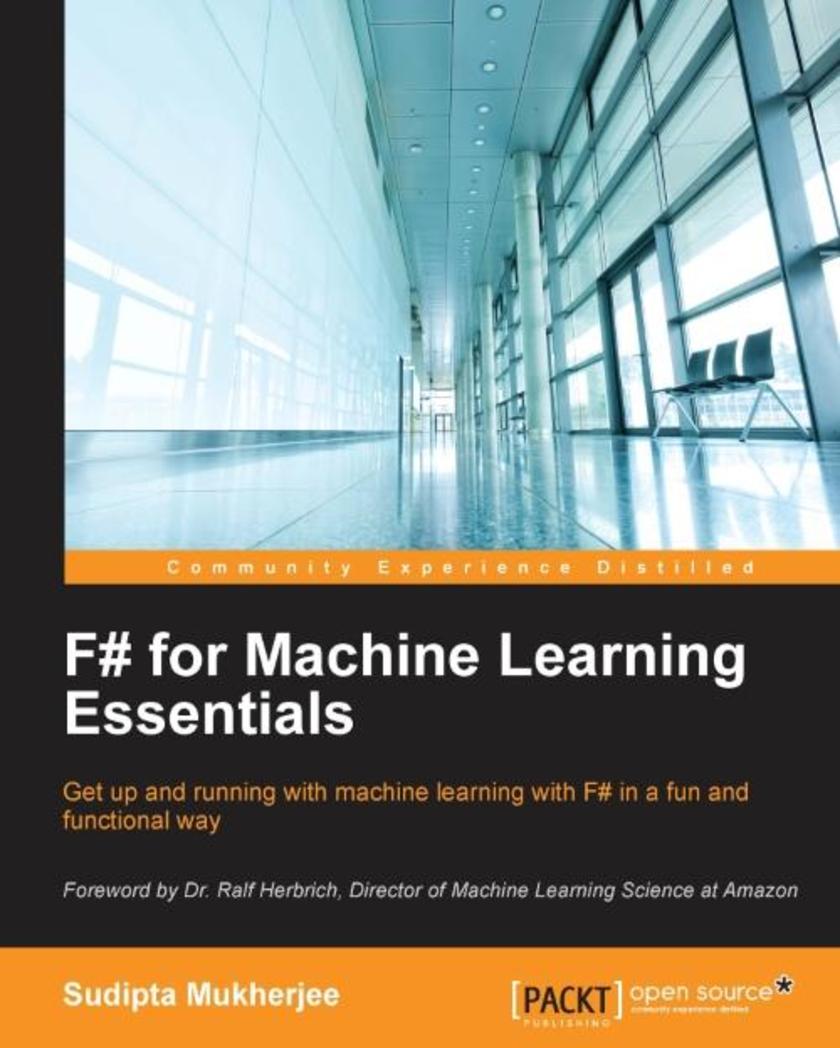
F# for Machine Learning Essentials
¥71.93
Get up and running with machine learning with F# in a fun and functional wayAbout This BookDesign algorithms in F# to tackle complex computing problemsBe a proficient F# data scientist using this simple-to-follow guideSolve real-world, data-related problems with robust statistical models, built for a range of datasetsWho This Book Is ForIf you are a C# or an F# developer who now wants to explore the area of machine learning, then this book is for you. Familiarity with theoretical concepts and notation of mathematics and statistics would be an added advantage.What You Will LearnUse F# to find patterns through raw dataBuild a set of classification systems using Accord.NET, Weka, and F#Run machine learning jobs on the Cloud with MBracePerform mathematical operations on matrices and vectors using Math.NETUse a recommender system for your own problem domainIdentify tourist spots across the globe using inputs from the user with decision tree algorithmsIn DetailThe F# functional programming language enables developers to write simple code to solve complex problems. With F#, developers create consistent and predictable programs that are easier to test and reuse, simpler to parallelize, and are less prone to bugs.If you want to learn how to use F# to build machine learning systems, then this is the book you want.Starting with an introduction to the several categories on machine learning, you will quickly learn to implement time-tested, supervised learning algorithms. You will gradually move on to solving problems on predicting housing pricing using Regression Analysis. You will then learn to use Accord.NET to implement SVM techniques and clustering. You will also learn to build a recommender system for your e-commerce site from scratch. Finally, you will dive into advanced topics such as implementing neural network algorithms while performing sentiment analysis on your data.Style and approachThis book is a fast-paced tutorial guide that uses hands-on examples to explain real-world applications of machine learning. Using practical examples, the book will explore several machine learning techniques and also describe how you can use F# to build machine learning systems.
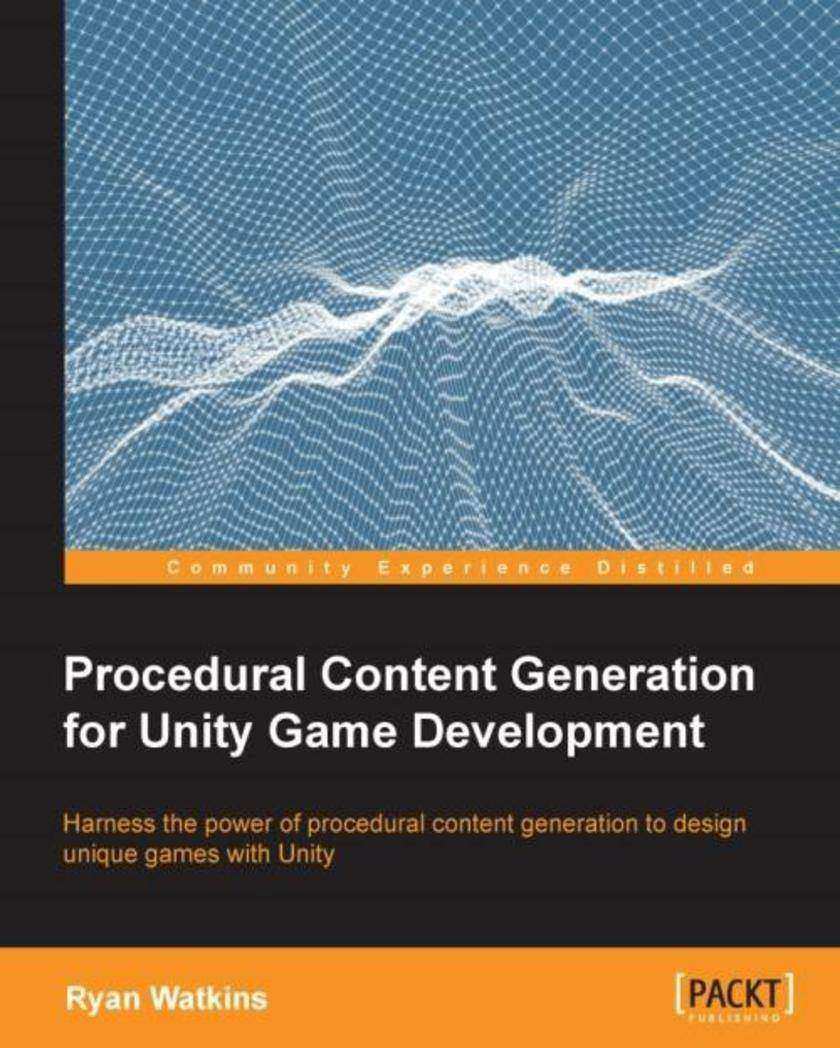
Procedural Content Generation for Unity Game Development
¥90.46
Harness the power of procedural content generation to design unique games with UnityAbout This BookLearn the basics of PCG developmentDevelop a 2D game from start to finishExplore all the different ways PCG can be applied in gamesWho This Book Is ForThis book is for Unity game developers, especially those who work on indie games. You should be familiar with Unity and C# *ing but you'll be able to jump in and start learning PCG straightaway.What You Will LearnUnderstand the theory of Procedural Content GenerationLearn the uses of Pseudo Random NumbersCreate reusable algorithm designs for PCGEvaluate the data structures for PCGDevelop smaller games with larger amounts of contentGenerate content instead of spending time designing every minute detailLearn when and how to add PCG to your gameLearn the fundamental techniques of PCGIn DetailProcedural Content Generation is a process by which game content is developed using computer algorithms, rather than through the manual efforts of game developers. This book teaches readers how to develop algorithms for procedural generation that they can use in their own games. These concepts are put into practice using C# and Unity is used as the game development engine.This book provides the fundamentals of learning and continued learning using PCG. You'll discover the theory of PCG and the mighty Pseudo Random Number Generator. Random numbers such as die rolls and card drafting provide the chance factor that makes games fun and supplies spontaneity. This book also takes you through the full development of a 2D game.Starting with level generation, you'll learn how PCG can make the game environment for you. You'll move into item generation and learn the different techniques to procedurally create game items. Thereafter, you'll be guided through the more abstract PCG areas such as scaling difficulty to the player and even generating music! The book helps you set up systems within your games where algorithms create computationally generated levels, art assets, quests, stories, characters, and weapons; these can substantially reduce the burden of manually creating every aspect of the game.Finally, you'll get to try out your new PCG skills on 3D terrain generation.Style and approachAn easy-to-follow, project-based guide that will let you build a complete game by the end of the book using PCG.
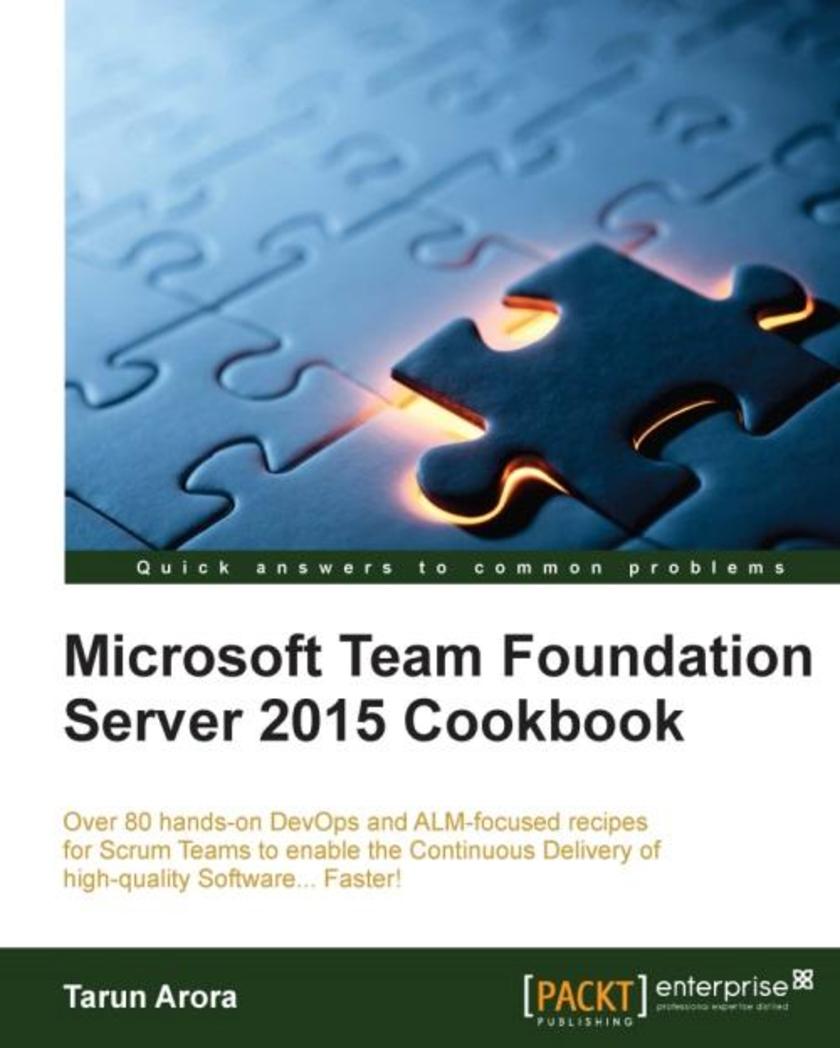
Microsoft Team Foundation Server 2015 Cookbook
¥90.46
Over 80 hands-on DevOps and ALM-focused recipes for Scrum Teams to enable the Continuous Delivery of high-quality Software... Faster!About This BookRelease high quality, reliable software quickly through building, testing, and deployment automationImprove the predictability, reliability, and availability of TFS in your organization by scheduling administration and maintenance activitiesExtend, customize, and integrate tools with TFS, enabling your teams to manage their application lifecycles effectivelyWho This Book Is ForThis book is aimed at software professionals including Developers, Testers, Architects, Configuration Analysts, and Release Managers who want to understand the capabilities of TFS to deliver better quality software faster.A working setup of TFS 2015 and some familiarity with the concepts of software life cycle management is assumed.What You Will LearnCreating a Team Project with Dashboards, Assigning License, Adding users, and Auditing AccessSetting up a Git repository in an existing TFVC-based Team ProjectSetting up branch policies and conducting Pull requests with code reviewsMapping, assigning and tracking work items shared by multiple teamsSetting up and customizing Backlogs, Kanban board, Sprint Taskboard, and dashboardsCreating a Continuous Integration, Continuous Build, and Release PipelineIntegrating SonarQube with TFBuild to manage Technical DebtTriggering Selenium Web Tests on a Selenium Test Grid using TFBuildUsing Visual Studio Team Services Cloud load testing capability with new Build frameworkExtending and customizing the capabilities of Team Foundation Server using API and Process EditorIn DetailTeam Foundation Server (TFS) allows you to manage code repositories, build processes, test infrastructure, and deploy labs. TFS supports your team, enabling you to connect, collaborate, and deliver on time. Microsoft's approach to Application Lifecycle Management (ALM) provides a flexible and agile environment that adapts to the needs of your team, removes barriers between roles, and streamlines processes.The book introduces you to creating and setting up team projects for scrum teams. You'll explore various source control repositories, branching, and merging activities, along with a demonstration of how to embed quality into every code check-in. Then, you'll discover agile project planning and management tools. Later, emphasis is given to the testing and release management features of TFS which facilitate the automation of the release pipeline in order to create potentially shippable increments.By the end of the book, you'll have learned to extend and customize TFS plugins to incorporate them into other platforms and enable teams to manage the software lifecycle effectively.Style and approachThis book is a recipe-based guide that uses a problem-solution format to call out inefficiencies in the software development lifecycle and then guides you, step-by-step, on how you can use Team Foundation Server to your advantage in those areas.
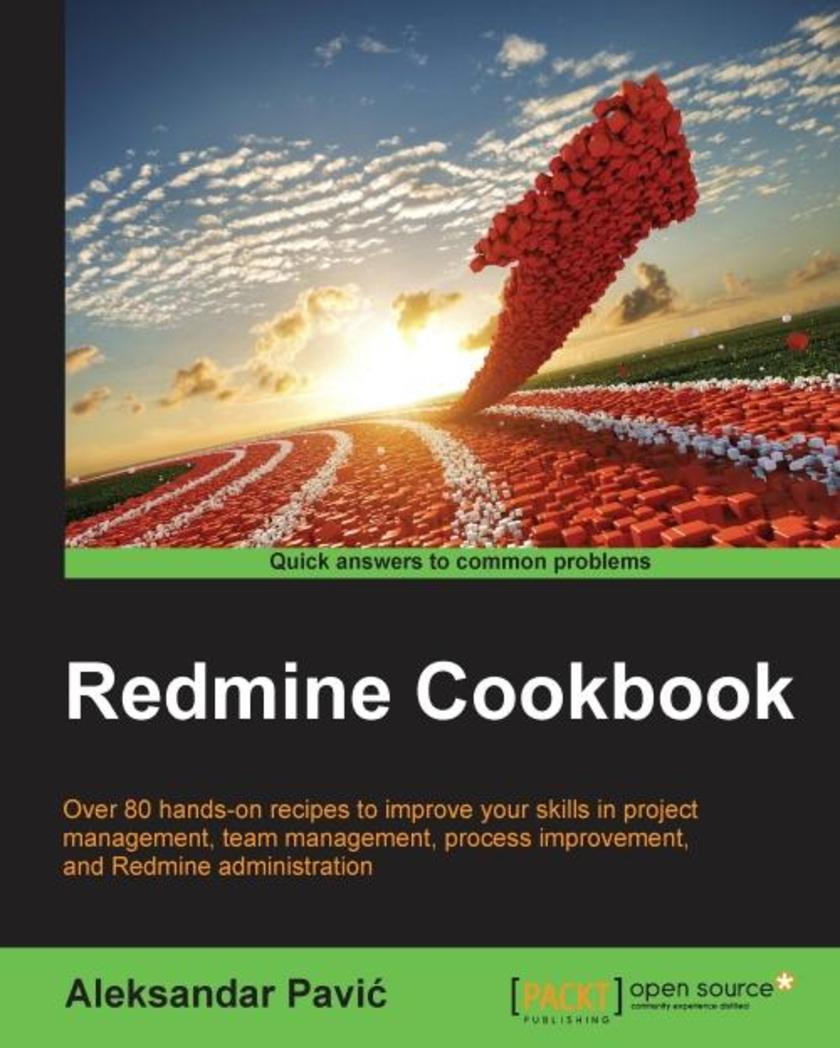
Redmine Cookbook
¥80.65
Over 80 hands-on recipes to improve your skills in project management, team management, process improvement, and Redmine administrationAbout This BookEfficiently install and customize Redmine for your own infrastructure, whether that be Microsoft or open sourceManage multiple projects with multiple teams across the globe in a standardized and effective wayCustomize Redmine to fit your organisation's specific and unique needsWho This Book Is ForThis book is for those who working in management or administrator positions who are already using Redmine or are willing to start using it for project management, tracking, collaboration, or process management. Additionally, individual developers or teams can benefit from recipes related to code repositories, bug tracking, and software project management.What You Will LearnMake Redmine run on Microsoft SQL Server with IISEnjoy the benefits of updating the code on a real-time basis and maintaining consistencyManage multiple projects and teams simultaneouslyLeverage Redmine features to enhance team's performanceUse Redmine for SCRUM and Agile methodologiesDeploy Redmine for Service DeskCustomize the user experience by manually tracking the ongoing projectsExtend Redmine through various pluginsIn DetailIn a variety of online project management tools, Redmine markets itself as offering flexibility. Choosing the right management tool can mean the difference between the success and failure of a project. Flexible project management tools bend themselves to fit your needs, whether that’s communication regarding a simple project, or collaboration, or more complex project methodology such as SCRUM, or an issue-code relationship, or the need of different methodology for your project.Whether you are project manager or system administrator, this book provides valuable recipes to get the best possible performance out of your team, organization, infrastructure, and Redmine itself. Through a series of carefully crafted recipes covering the nitty-gritty of Redmine, you’ll be guided through the installation of Redmine, as well as how to fine-tune and customize your Redmine installation. Finally, we walk you through integrating Redmine with other softwares and databases like Tortoise SVN and Visual Studio and troubleshooting Redmine.Style and approachThis book follows a step-by-step recipe-based approach. Detailed prerequisites make each recipe easy to follow and apply in practice in any kind of live environment.

Learning Network Forensics
¥90.46
Identify and safeguard your network against both internal and external threats, hackers, and malware attacksAbout This BookLay your hands on physical and virtual evidence to understand the sort of crime committed by capturing and analyzing network trafficConnect the dots by understanding web proxies, firewalls, and routers to close in on your suspectA hands-on guide to help you solve your case with malware forensic methods and network behaviorsWho This Book Is ForIf you are a network administrator, system administrator, information security, or forensics professional and wish to learn network forensic to track the intrusions through network-based evidence, then this book is for you. Basic knowledge of Linux and networking concepts is expected.What You Will LearnUnderstand Internetworking, sources of network-based evidence and other basic technical fundamentals, including the tools that will be used throughout the bookAcquire evidence using traffic acquisition software and know how to manage and handle the evidencePerform packet analysis by capturing and collecting data, along with content analysisLocate wireless devices, as well as capturing and analyzing wireless traffic data packetsImplement protocol analysis and content matching; acquire evidence from NIDS/NIPSAct upon the data and evidence gathered by being able to connect the dots and draw links between various eventsApply logging and interfaces, along with analyzing web proxies and understanding encrypted web trafficUse IOCs (Indicators of Compromise) and build real-world forensic solutions, dealing with malwareIn DetailWe live in a highly networked world. Every digital device—phone, tablet, or computer is connected to each other, in one way or another. In this new age of connected networks, there is network crime. Network forensics is the brave new frontier of digital investigation and information security professionals to extend their abilities to catch miscreants on the network.The book starts with an introduction to the world of network forensics and investigations. You will begin by getting an understanding of how to gather both physical and virtual evidence, intercepting and analyzing network data, wireless data packets, investigating intrusions, and so on. You will further explore the technology, tools, and investigating methods using malware forensics, network tunneling, and behaviors. By the end of the book, you will gain a complete understanding of how to successfully close a case.Style and approachAn easy-to-follow book filled with real-world case studies and applications. Each topic is explained along with all the practical tools and software needed, allowing the reader to use a completely hands-on approach.
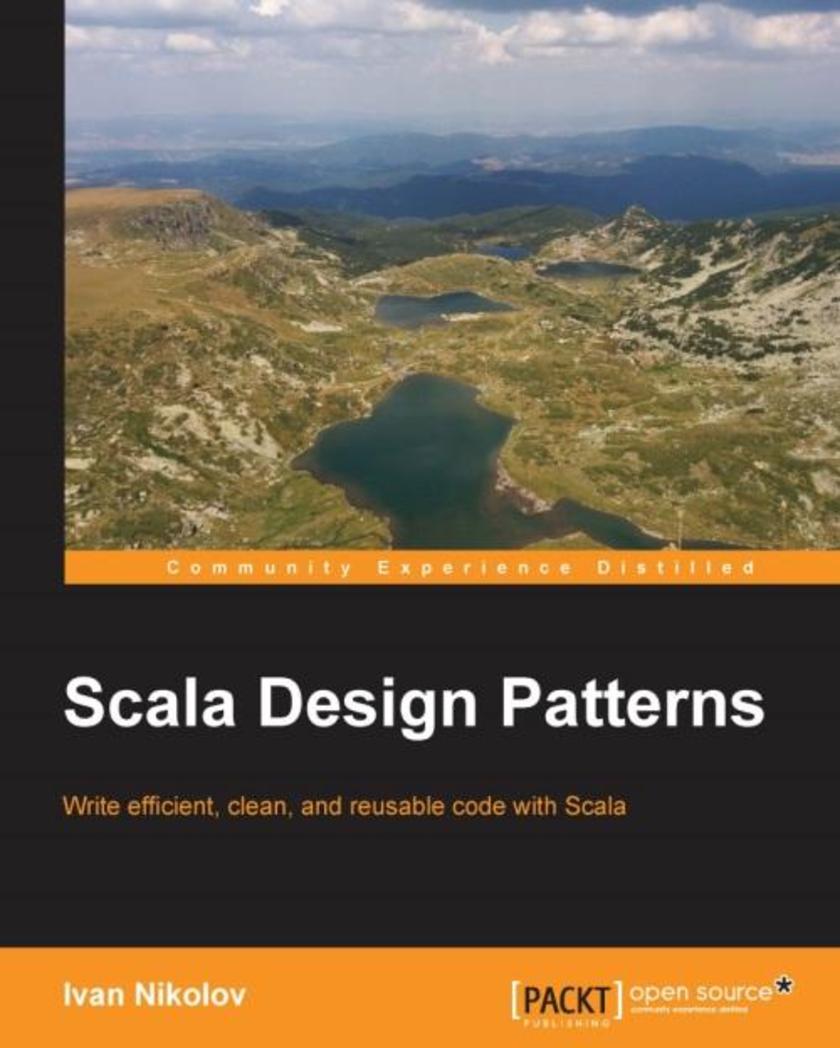
Scala Design Patterns
¥99.18
Write efficient, clean, and reusable code with ScalaAbout This BookUnleash the power of Scala and apply it in the real worldIncrease your efficiency by leveraging the power of Creational, Structural, Behavioural, and Functional design patternsBuild object oriented and functional applications quickly and effectivelyWho This Book Is ForIf you want to increase your understanding of Scala and apply it to real-life application development, then this book is for you. We’ve also designed the book to be used as a quick reference guide while creating applications. Previous Scala programming knowledge is expected.What You Will LearnImmerse yourself in industry-standard design patterns—structural, creational, and behavioral—to create extraordinary applicationsFeel the power of traits and their application in ScalaImplement abstract and self types and build clean design patternsBuild complex entity relationships using structural design patternsCreate applications faster by applying functional design patternsIn DetailScala has become increasingly popular in many different IT sectors. The language is exceptionally feature-rich which helps developers write less code and get faster results. Design patterns make developer’s lives easier by helping them write great software that is easy to maintain, runs efficiently and is valuable to the company or people concerned.You will learn about the various features of Scala and be able to apply well-known, industry-proven design patterns in your work. The book starts off by focusing on some of the most interesting features of Scala while using practical real-world examples. We will also cover the popular "Gang of Four" design patterns and show you how to incorporate functional patterns effectively. By the end of this book, you will have enough knowledge and understanding to quickly assess problems and come up with elegant solutions.Style and approachThe design patterns in the book will be explained using real-world, step-by-step examples. For each design pattern, there will be hints about when to use it and when to look for something more suitable. This book can also be used as a practical guide, showing you how to leverage design patterns effectively.
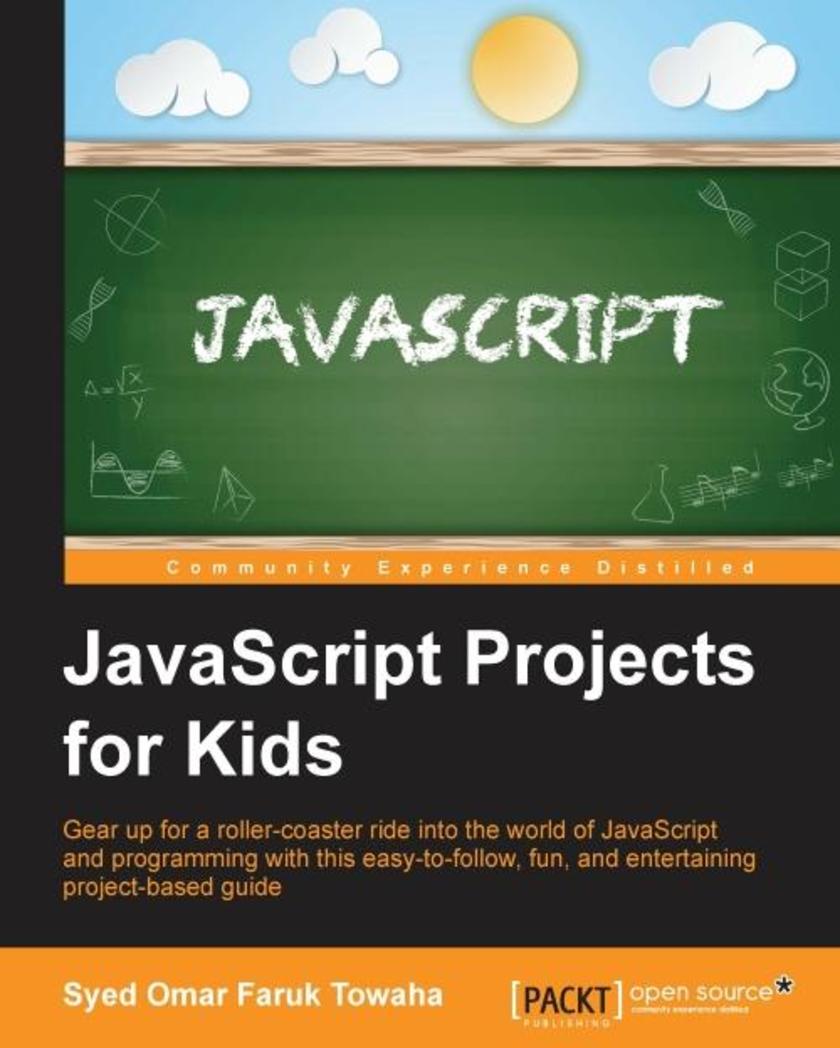
JavaScript Projects for Kids
¥45.77
Gear up for a roller-coaster ride into the world of JavaScript and programming with this easy-to-follow, fun, and entertaining project-based guideAbout This BookGet to know the concepts of HTML and CSS to work with JavaScriptExplore the concepts of object-oriented programmingFollow this step-by-step guide on the fundamentals of JavaScript programmingWho This Book Is ForIf you've never written code before or you are completely new to the world of web programming, then this book is the right choice for you. This book is for kids of age 10 years and above and parents who are completely new to the world of programming and want to get introduced to programming.What You Will LearnLearn how to work with Google Developer tools to iterate, debug and profile your codeDevelop a Battleship game using the basic concepts of HTML and CSSGet to know the fundamentals of JavaScript programmingCreate our own version of Pac Man game.Discover the vital concepts of object-oriented programmingIn DetailJavaScript is the most widely-used programming language for web development and that's not all! It has evolved over the years and is now being implemented in an array of environments from websites to robotics. Learning JavaScript will help you see the broader picture of web development.This book will take your imagination to new heights by teaching you how to work with JavaScript from scratch. It will introduce you to HTML and CSS to enhance the appearance of your applications. You’ll then use your skills to build on a cool Battleship game! From there, the book will introduce you to jQuery and show you how you can manipulate the DOM. You’ll get to play with some cool stuff using Canvas and will learn how to make use of Canvas to build a game on the lines of Pacman, only a whole lot cooler! Finally, it will show you a few tricks with OOP to make your code clean and will end with a few road maps on areas you can explore further.Style and approachThis is an easy-to-follow, informative, and fun guide that takes a project-based approach to teaching programming in JavaScript. You will learn everything you need to get started with serious web application development.
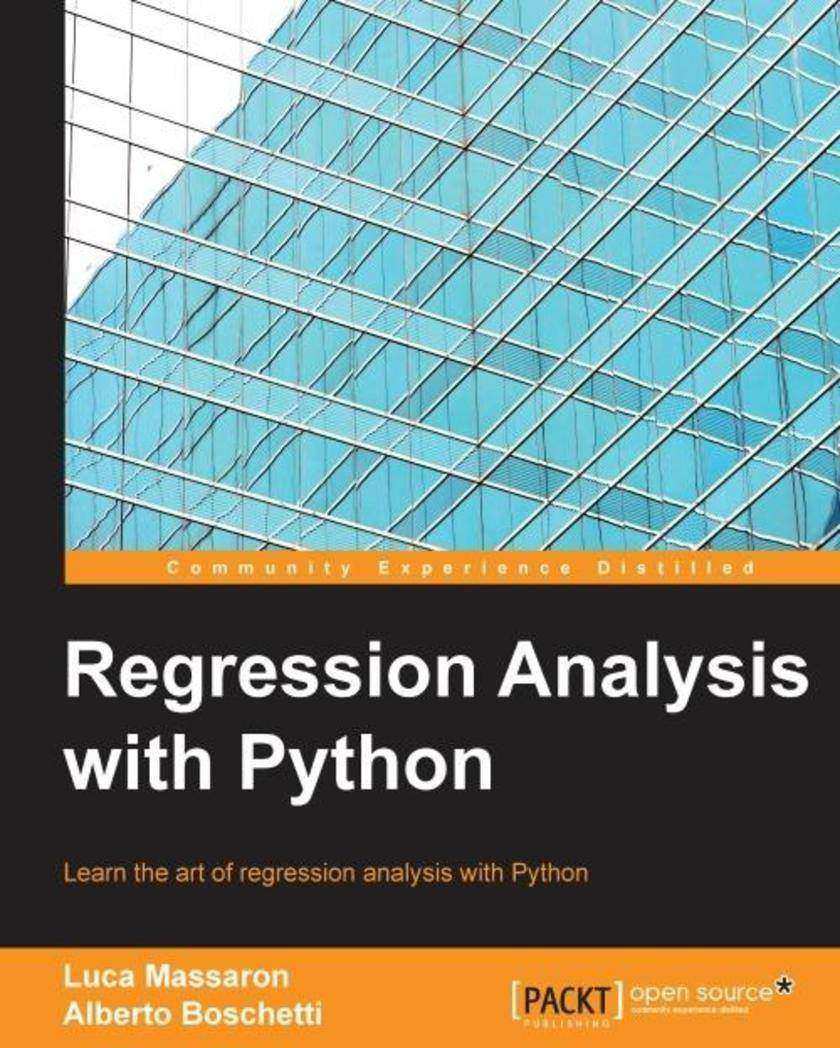
Regression Analysis with Python
¥80.65
Learn the art of regression analysis with PythonAbout This BookBecome competent at implementing regression analysis in PythonSolve some of the complex data science problems related to predicting outcomesGet to grips with various types of regression for effective data analysisWho This Book Is ForThe book targets Python developers, with a basic understanding of data science, statistics, and math, who want to learn how to do regression analysis on a dataset. It is beneficial if you have some knowledge of statistics and data science.What You Will LearnFormat a dataset for regression and evaluate its performanceApply multiple linear regression to real-world problemsLearn to classify training pointsCreate an observation matrix, using different techniques of data analysis and cleaningApply several techniques to decrease (and eventually fix) any overfitting problemLearn to scale linear models to a big dataset and deal with incremental dataIn DetailRegression is the process of learning relationships between inputs and continuous outputs from example data, which enables predictions for novel inputs. There are many kinds of regression algorithms, and the aim of this book is to explain which is the right one to use for each set of problems and how to prepare real-world data for it. With this book you will learn to define a simple regression problem and evaluate its performance. The book will help you understand how to properly parse a dataset, clean it, and create an output matrix optimally built for regression. You will begin with a simple regression algorithm to solve some data science problems and then progress to more complex algorithms. The book will enable you to use regression models to predict outcomes and take critical business decisions. Through the book, you will gain knowledge to use Python for building fast better linear models and to apply the results in Python or in any computer language you prefer.Style and approach This is a practical tutorial-based book. You will be given an example problem and then supplied with the relevant code and how to walk through it. The details are provided in a step by step manner, followed by a thorough explanation of the math underlying the solution. This approach will help you leverage your own data using the same techniques.

Learning Drupal 8
¥80.65
Create complex websites quickly and easily using the building blocks of Drupal 8, the most powerful version of Drupal yetAbout This BookBuild complete, complex websites with no prior knowledge of web development entirely using the intuitive Drupal user interfaceFollow a practical case study chapter-by-chapter to construct a complete website as you progressEnsure your sites are modern, responsive and mobile-friendly through utilizing the full features available in Drupal 8Who This Book Is ForIf you want to learn to use Drupal 8 for the first time, or you are transitioning over from a previous version of Drupal, this is the book for you. No knowledge of PHP, MySQL, or HTML is assumed or requiredWhat You Will LearnSet up a local “stack” development environment and install your first Drupal 8 siteFind out what is available in Drupal 8 coreDefine content types and taxonomies—and find out when you should do soUse the powerful Views moduleGet hands-on with image and media handlingExtend Drupal using custom community modulesDevelop the look and feel of your website using Drupal themesManage site users and permissionsIn DetailDrupal 8 sets a new standard for ease of use, while offering countless new ways to tailor and deploy your content to the Web. Drupal 8 allows user to easily customize data structures, listings, and pages, and take advantage of new capabilities for displaying data on mobile devices, building APIs, and adapting to multilingual needs.The book takes you step by step through building a Drupal 8 website. Start with the basics, such as setting up a local “stack” development environment and installing your first Drupal 8 site, then move on to image and media handling, and extending Drupal modules. Push your knowledge by getting to grips with the modular nature of Drupal, and learning to extend it by adding new functionalities to create your new modules. By the end of the book, you will be able to develop and manage a modern and responsive website using Drupal.Style and approachThis is an absolute beginners’ guide, providing step-by-step instructions to help you learn Drupal 8 from scratch.
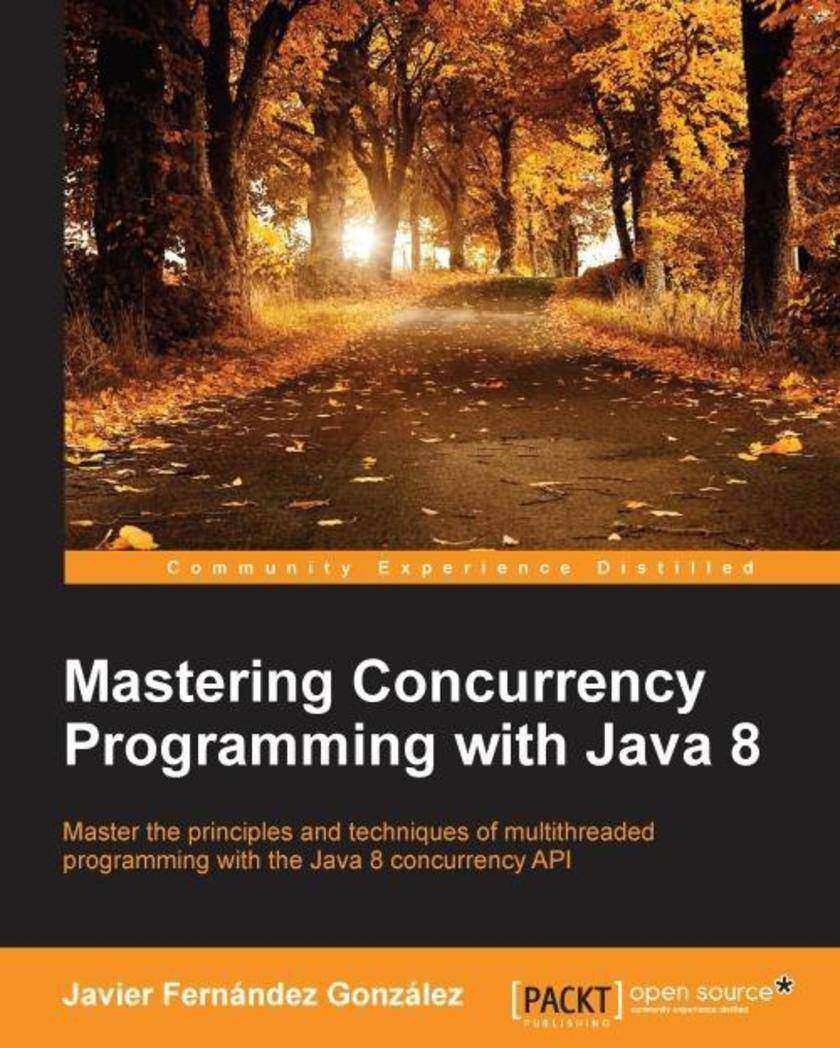
Mastering Concurrency Programming with Java 8
¥99.18
Master the principles and techniques of multithreaded programming with the Java 8 Concurrency APIAbout This BookImplement concurrent applications using the Java 8 Concurrency API and its new componentsImprove the performance of your applications or process more data at the same time, taking advantage of all of your resources.Construct real-world examples related to machine learning, data mining, image processing, and client/server environmentsWho This Book Is ForIf you are a competent Java developer with a good understanding of concurrency but have no knowledge of how to effectively implement concurrent programs or use streams to make processes more efficient, then this book is for you.What You Will LearnDesign concurrent applications by converting a sequential algorithm into a concurrent oneDiscover how to avoid all the possible problems you can get in concurrent algorithmsUse the Executor framework to manage concurrent tasks without creating threadsExtend and modify Executors to adapt their behavior to your needsSolve problems using the divide and conquer technique and the Fork/Join frameworkProcess massive data sets with parallel streams and Map/Reduce implementationControl data-race conditions using concurrent data structures and synchronization mechanismsTest and monitor concurrent applicationsIn DetailConcurrency programming allows several large tasks to be divided into smaller sub-tasks, which are further processed as individual tasks that run in parallel. All the sub-tasks are combined together once the required results are achieved; they are then merged to get the final output. The whole process is very complex. This process goes from the design of concurrent algorithms to the testing phase where concurrent applications need extra attention. Java includes a comprehensive API with a lot of ready-to-use components to implement powerful concurrency applications in an easy way, but with a high flexibility to adapt these components to your needs.The book starts with a full de*ion of design principles of concurrent applications and how to parallelize a sequential algorithm. We'll show you how to use all the components of the Java Concurrency API from basics to the most advanced techniques to implement them in powerful concurrency applications in Java.You will be using real-world examples of complex algorithms related to machine learning, data mining, natural language processing, image processing in client / server environments. Next, you will learn how to use the most important components of the Java 8 Concurrency API: the Executor framework to execute multiple tasks in your applications, the phaser class to implement concurrent tasks divided into phases, and the Fork/Join framework to implement concurrent tasks that can be split into smaller problems (using the divide and conquer technique). Toward the end, we will cover the new inclusions in Java 8 API, the Map and Reduce model, and the Map and Collect model. The book will also teach you about the data structures and synchronization utilities to avoid data-race conditions and other critical problems. Finally, the book ends with a detailed de*ion of the tools and techniques that you can use to test a Java concurrent application.Style and approach A complete guide implementing real-world examples with algorithms related to machine learning, data mining, and natural language processing in client/server environments. All the examples are explained in a step-by-step approach.
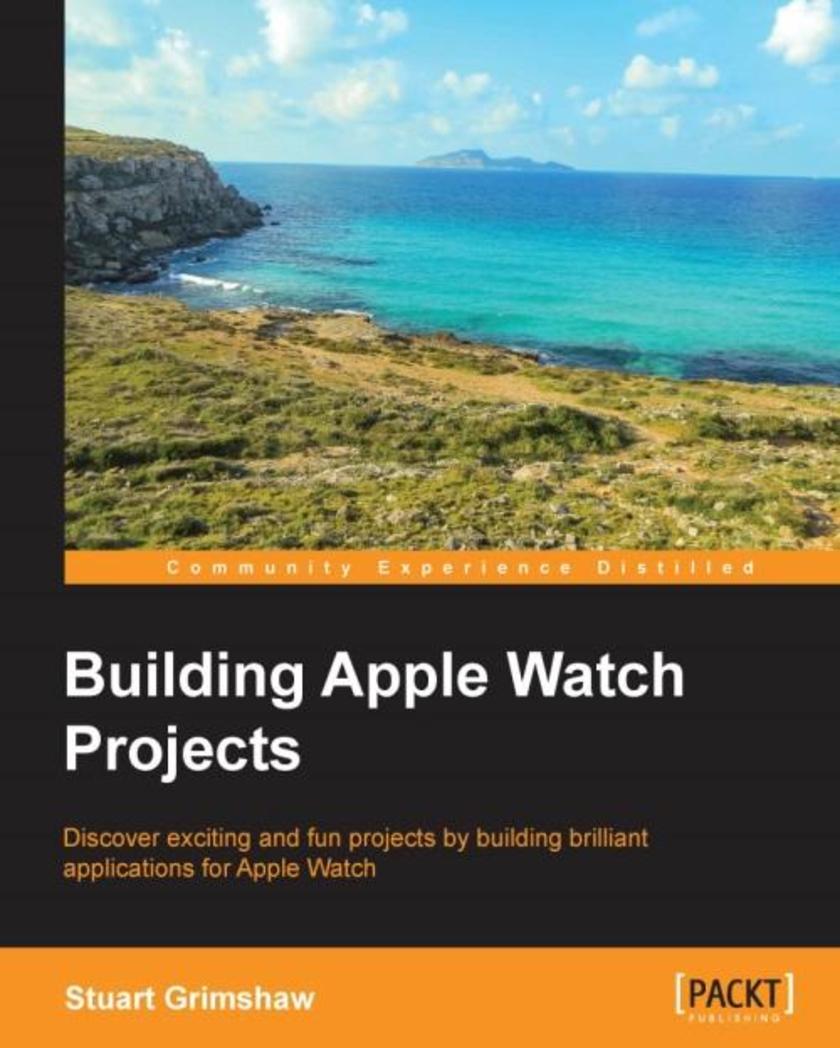
Building Apple Watch Projects
¥80.65
Discover exciting and fun projects by building brilliant applications for the Apple WatchAbout This BookExplore the opportunities opened up to developers by Apple’s latest device: the Apple WatchBe a crackerjack at developing software across a broad range of watch app categoriesFrom an eminent author, master all stages of development, from the first stage through to a completed projectWho This Book Is ForIf you have some basic knowledge of programming in Swift and are looking for the best way to get started with Apple Watch development, this book is just the right one for you!What You Will LearnUnderstand the concept of the Apple Watch as an autonomous device as well as it being paired with the iPhoneGet your app up and runningDesign exciting, inspiring, and attractive layouts for your appsMake your user interface more engaging using images and animationEnable your Watch and iPhone apps to transport and share dataLeverage the feature-rich set of WatchKit technologies provided by AppleConnect your apps to the InternetSubmit your app to the App StoreIn DetailWith Apple’s eagerly anticipated entry into the wearable arena, the field is wide open for a new era of app development. The Apple Watch is one of the most important technologies of our time.This easy-to-understand book takes beginners on a delightful journey of discovering the features available to the developer, right up to the completion of medium-level projects ready for App Store submission. It provides the fastest way to develop real-world apps for the Apple Watch by teaching you the concepts of Watch UI, visual haptic and audio, message and data exchange between watch and phone, Web communication, and finally Visual, haptic as well as audio feedback for users.By the end of this book, you will have developed at least four fully functioning apps for deployment on watchOS 2.Style and approachThis is a step-by-step guide to developing apps for the Apple Watch with the help of screenshots and fully coded working examples.
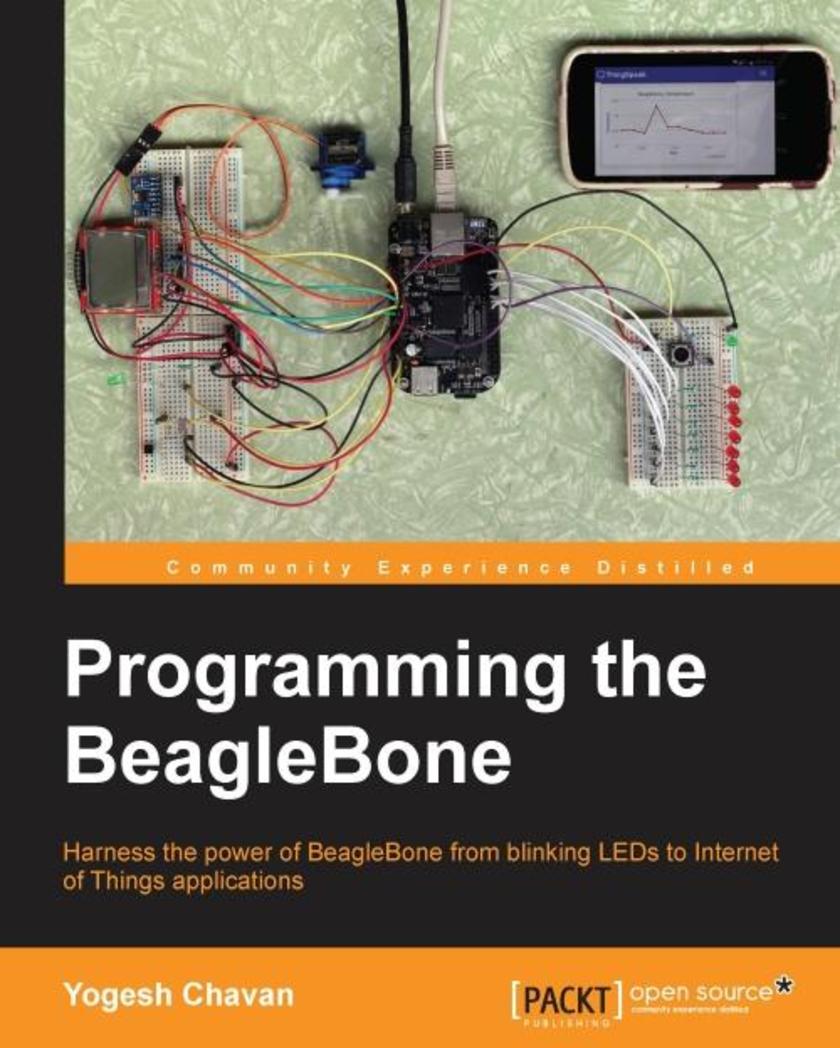
Programming the BeagleBone
¥54.49
Master BeagleBone programming by doing simple electronics and Internet of Things projectsAbout This BookQuickly develop electronics projects that interact with Internet applications using JavaScript and PythonLearn about electronics components such as sensors and motors, and how to communicate with them by writing programsA step-by-step guide to explore the exciting world of BeagleBone—from connecting BeagleBone to doing electronics projects and creating IoT applicationsWho This Book Is ForIf you want to learn programming on embedded systems with BeagleBone by doing simple electronics projects, this book is for you. This book is also helpful to BeagleBone owners who want to quickly implement small-scale home automation solutions. It is assumed that you have familiarity with C and Python programming. Some familiarity with electronics is helpful but not essential.What You Will LearnConnect your BeagleBone to a computer in different ways and get the Cloud9 IDE running to quick-start programming on the BeagleBoneGet to know about BeagleBone extension pins such as GPIO and how to connect various electronics components with BeagleBoneRead and write to various electronics components such as LED, Push-button, sensors, and motorsGrasp in-depth theory on Analog, PWM, and BUS programming and the electronics components used in programsHandle data to and from various BUS supporting modules such as UART, I2C, and SPI using the Adafruit BBIO Python libraryWrite real-life IoT applications in JavaScript and Python such as shooting an e-mail on overheat and controlling a servo motor remotelyMake use of online free cloud services to store and analyze sensor data collected on the BeagleBoneDiscover what else can be done using the BeagleBoneGet to grips with embedded system BUS communicationIn DetailThe whole world is moving from desktop computers to smartphones and embedded systems. We are moving towards utilizing Internet of Things (IoT). An exponential rise in the demand for embedded systems and programming in the last few years is driving programmers to use embedded development boards such as Beaglebone.BeagleBone is an ultra-small, cost-effective computer that comes with a powerful hardware. It runs a full-fledged Debian Linux OS and provides numerous electronics solutions. BeagleBone is open source and comes with an Ethernet port, which allows you to deploy IoT projects without any additions to the board. It provides plenty of GPIO, Anlaog pins, and UART, I2C, SPI pins which makes it the right choice to perform electronics projects. This gives you all the benefits of Linux kernel such as multitasking, multiusers, and extensive device driver support. This allows you to do programming in many languages including high-level languages such as JavaScript and Python.This book aims to exploit the hardware and software capabilities of BeagleBone to create real-life electronics and IoT applications quickly. It is divided into two parts. The first part covers JavaScript programs. The second part provides electronics projects and IoT applications in Python.First, you will learn to use BeagleBone as tool to write useful applications on embedded systems. Starting with the basics needed to set up BeagleBone and the Cloud9 IDE, this book covers interfacing with various electronics components via simple programs. The electronics theory related to these components is then explained in depth before you use them in a program. Finally, the book helps you create some real-life IoT applications.Style and approachAn easy-to-follow guide full of real-world electronics programs and quick troubleshooting tips using BeagleBone. All the required electronics concepts are explained in detail before using them in a program and all programs are explained in depth. Most of the theory is covered in the first part; while the second part gives you some quick programs.
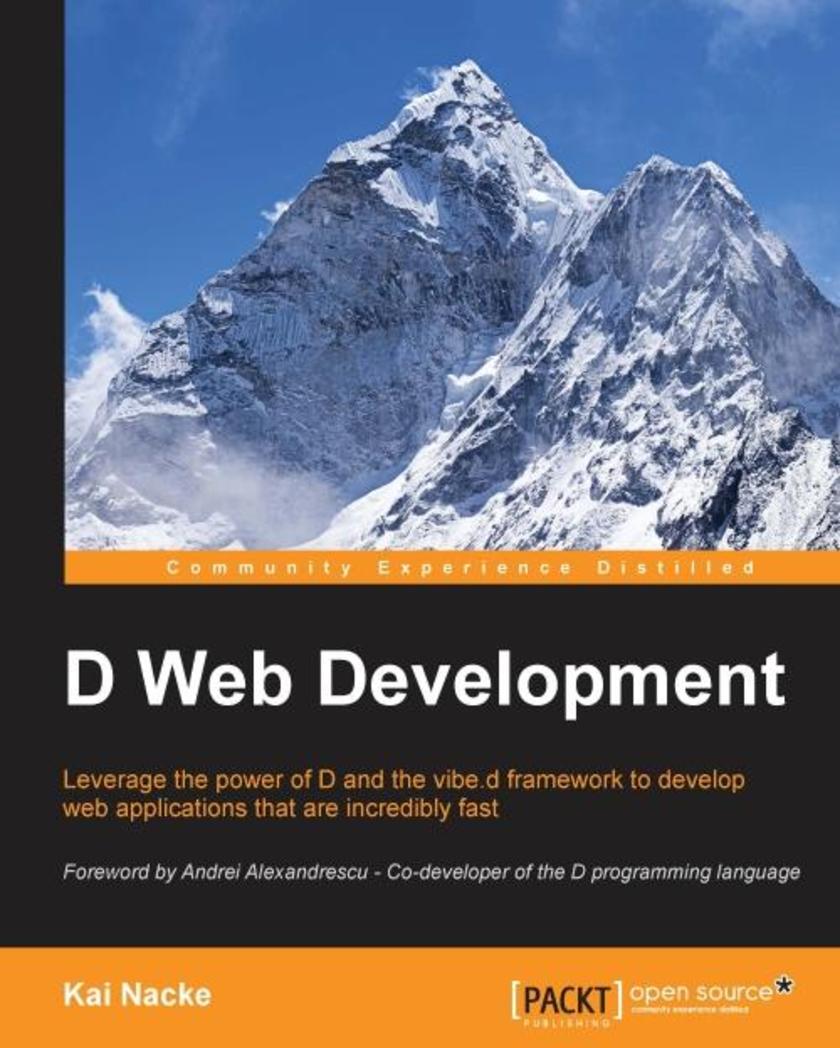
D Web Development
¥63.21
Leverage the power of D and the vibe.d framework to develop web applications that are incredibly fastAbout This BookUtilize the elegant vibe.d framework to build web applications easily and REST backends with the D programming languageLearn about all components of vibe.d to enhance your web development with DA hands-on guide to the vibe.d framework; from static web pages to template-based, interactive and localized web applications with database access and REST backendsWho This Book Is ForWhether you are new to the world of D, or already have developed applications in D, or if you want to leverage the power of D for web development, then this book is ideal for you. Basic knowledge of core web technologies like HTML 5 is helpful but not required. This book explains the difficult details to speed your web development.What You Will LearnCreate amazingly fast web applications with DUse Diet templates to easily create a web user interfaceUtilize the web framework for interactive applications with input validation and internationalizationAccess a database to provide persistent storage for your applicationExtend your application with a REST interface and access other applications via RESTUnderstand vibe.d’s fiber-based approach to asynchronous I/O and use it for integration of existing componentsCreate GUI applications with vibe.dIn DetailD is a programming language with C-like syntax and static typing. The vibe.d framework builds on powerful D concepts like template meta-programming and compile-time function execution to provide an easy-to-use environment for web applications. The combination of a feature-rich web programming framework with a language compiling to native code solves two common issues in web development today: it accelerates your development and it results in fast, native web applications. Learning the vibe.d framework before you start your application will help you to choose the right features to reach your goal.This book guides you through all aspects of web development with D and the vibe.d framework.Covering the popular operating systems today, this guide starts with the setup of your development system. From the first Hello World-style application you will move on to building static web pages with templates. The concise treatment of web forms will give you all the details about form handling and web security. Using the abstractions of the web framework you will learn how to easily validate user input. Next, you will add database access to your application, providing persistent storage for your data. Building on this foundation, you will expose your component and integrate other components via REST. Learning about the internals of vibe.d you will be able to use low-level techniques such as raw TCP access. The vibe.d concepts can also be used for GUI clients, which is the next topic that you will learn. vibe.d is supported by an active community, which adds new functionality. This comprehensive guide concludes with an overview of the most useful vibe.d extensions and where to find them. It also shows you how to integrate these extensions in your application.The concepts are always illustrated with source code, giving you an insight into how to apply them in your application.Style and approachA tutorial-style guide to develop web applications with D and the vibe.d framework. Each topic is explained in detail and illustrated with source code, providing you with hands-on assistance for your application.
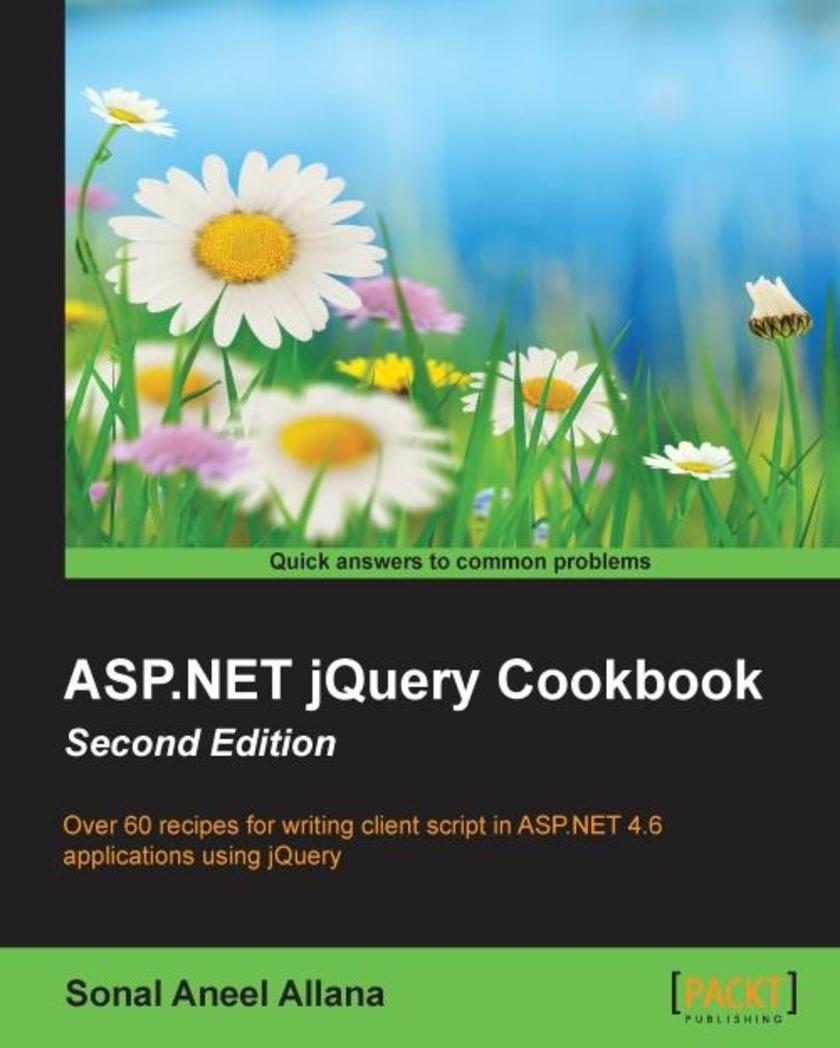
ASP.NET jQuery Cookbook - Second Edition
¥99.18
Over 60 recipes for writing client * in ASP.NET 4.6 applications using jQueryAbout This BookThis is a step-by-step guide to solve common problems in ASP.NET applicationsEasy-to-follow recipes to write client *s effortlessly and quicklyA hands-on approach that will show you how to interface jQuery with ASP.NET websites and MVCWho This Book Is ForThis book is for ASP.NET developers who want to use jQuery to write client *s for cross-browser compatibility. The book assumes no prior knowledge of ASP.NET or jQuery, and every recipe is self-contained and explained in an easy-to-follow manner. Familiarity with Visual Studio and MS SQL Server is preferred, but not compulsory.What You Will LearnDownload and include jQuery in ASP.NET websites and MVCUse jQuery selectors with ASP.NET server controlsGet to know about event handling and DOM traversalDeploy jQuery for visual effects and animationsDevelop AJAX-enabled ASP.NET applicationsCreate your own pluginsSolve common problems using less code and cut down your development timeIn DetailjQuery is a lightweight JavaScript library that has changed the landscape of client *ing in web applications. Developed by John Resig in 2006, it has taken the web by storm because of its cross-browser compatibility and the ability to get more done with less code. It has gained popularity with ASP.NET developers and is now distributed with Visual Studio and the NuGet package manager.ASP.NET jQuery Cookbook explores the wide range of utilities that the jQuery library provides. It teaches you the nitty-gritty of plugging in these features in ASP.NET web applications. It covers every aspect of interfacing the library, right from downloading and including jQuery on web pages to selecting controls, handling events, and creating animations. This book also walks you through DOM traversal and manipulation in ASP.NET and then through visual effects and graphics in ASP.NET sites. It explores advanced features such as posting AJAX requests and writing plugins. It will provide you with all the information you need to use this library confidently with ASP.NET.Style and approachThis book takes a hands-on, pragmatic approach to solving common problems in ASP.NET applications using jQuery. Every recipe has detailed steps with screen captures and code snippets. The necessary theoretical concepts are introduced as and when needed.
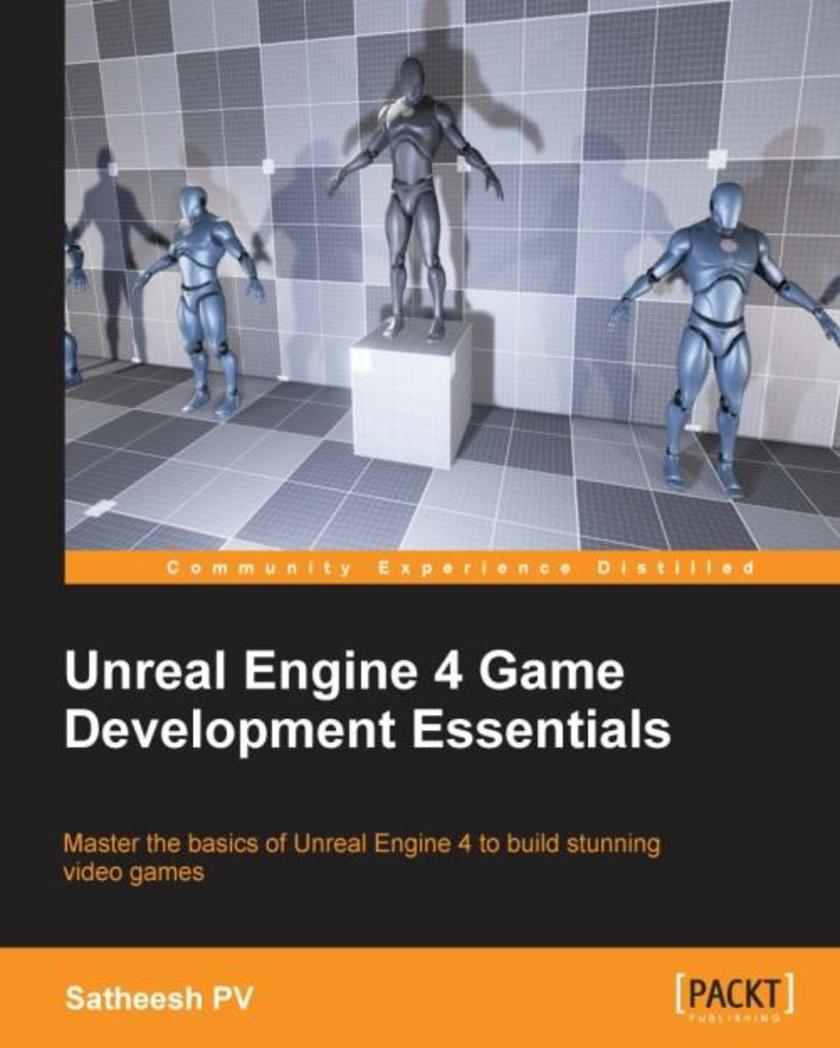
Unreal Engine 4 Game Development Essentials
¥80.65
Master the basics of Unreal Engine 4 to build stunning video gamesAbout This BookGet to grips with the user interface of Unreal Engine 4 and find out more about its various robust featuresCreate dream video games with the help of the different tools Unreal Engine 4 offersCreate video-games and fully utilize the power of Unreal Engine 4 to bring games to life through this step-by-step guideWho This Book Is ForIf you have a basic understanding of working on a 3D environment and you are interested in video game development, then this book is for you. A solid knowledge of C++ will come in handy.What You Will LearnDownload both the binary and source version of Unreal Engine 4 and get familiar with the UIGet to know more about the Material Editor and how it worksAdd a post process to the scene and alter it to get a unique look for your sceneAcquaint yourself with the unique and exclusive feature of Unreal Engine 4—BlueprintsFind out more about Static and Dynamic lighting and the difference between various lightsUse Matinee to create cut scenesCreate a health bar for the player with the use of Unreal Motion Graphics (UMG)Get familiar with Cascade Particle EditorIn DetailUnreal Engine 4 is a complete suite of game development tools that gives you power to develop your game and seamlessly deploy it to iOS and Android devices. It can be used for the development of simple 2D games or even stunning high-end visuals. Unreal Engine features a high degree of portability and is a tool used by many game developers today.This book will introduce you to the very popular Unreal 4 engine with hands-on instructions to build stunning video games. You will begin by creating a new project or prototype by learning the essentials of Unreal engine, then you’ll get an understanding of how the World Browser can help to improve performance of our game. Next, we’ll create a level of detailed models and materials to further improve performance. After that, you’ll see how to import textures, create different materials, and see what materials can do in terms of post-processing. Finally, you will get acquainted with the Paper2D tool and the blueprints system to further increase our project's performance with Engine’s scalability tools.Style and approachThis step-by-step guide will help you gain practical knowledge about Unreal Engine through detailed de*ions of all the tools offered by Unreal Engine.
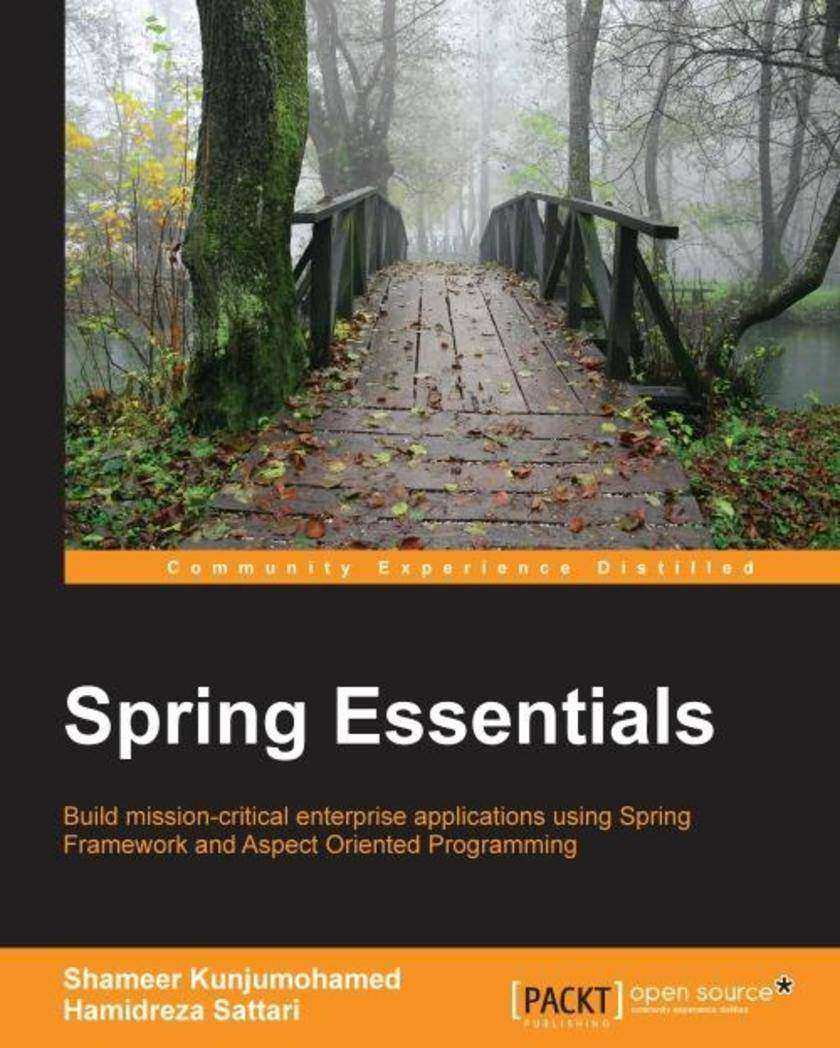
Spring Essentials
¥80.65
Build mission-critical enterprise applications using Spring Framework and Aspect Oriented ProgrammingAbout This BookStep into more advanced features of aspect-oriented programming and API components to build enterprise grade systemsBuild lightning-fast web applications and REST APIs using Spring MVC and its asynchronous processing capabilities with the view technologies of your choiceExplore simplified but powerful data access techniques including JPA (Java Persistence Architecture) repositories and NoSQL data accessWho This Book Is ForIf you are a Java developer who is looking to master Enterprise Java Development using Spring Framework, then this book is ideal for you. Prior understanding of core Java programming and a high-level understanding of Spring Framework is recommended. Having sound knowledge of servlet-based web development in Java and basic Database concepts would be an advantage but not a requirement.What You Will LearnSet up and build standalone and web-based projects using Spring Framework with Maven or GradleGet familiar with JSP Form processing using Spring and Form Tag LibraryDevelop RESTful API applications for XML and JSON data transfers with non-blocking asynchronous capabilitiesExplore Spring’s comprehensive transaction support for declarative Transaction Management and its integration with Spring’s data access abstractionsInvestigate Spring Data access mechanisms with Spring Data Repositories, a simple and consistent data-access abstractionConstruct real-time applications using WebSocket with a SockJS fallback optionUnderstand how to secure your Spring Web and standalone applications using Spring Security declaratively and consistentlyGet to grips with the end-to-end development of an API-based modern SPA using EmberJS at the front end and SpringMVC at the back endIn DetailSpring is an open source Java application development framework to build and deploy systems and applications that run on the JVM. It is the industry standard and the most popular framework among Java developers with over two-thirds of developers using it.Spring Essentials makes learning Spring so much quicker and easier with the help of illustrations and practical examples. Starting from the core concepts of features such as inversion of Control Container and BeanFactory, we move on to a detailed look at aspect-oriented programming. We cover the breadth and depth of Spring MVC, the WebSocket technology, Spring Data, and Spring Security with various authentication and authorization mechanisms.Packed with real-world examples, you’ll get an insight into utilizing the power of Spring Expression Language in your applications for higher maintainability. You’ll also develop full-duplex real-time communication channels using WebSocket and integrate Spring with web technologies such as JSF, Struts 2, and Tapestry. At the tail end, you will build a modern SPA using EmberJS at the front end and a Spring MVC-based API at the back end.By the end of the book, you will be able to develop your own dull-fledged applications with Spring.Style and approachThis book is a practical guide based on logical modules of the whole Spring Framework family, with a start-small approach, increasing in complexity as it progresses. Every chapter is an amalgamation of theory and practical examples, with further discussion on additional features and approaches.
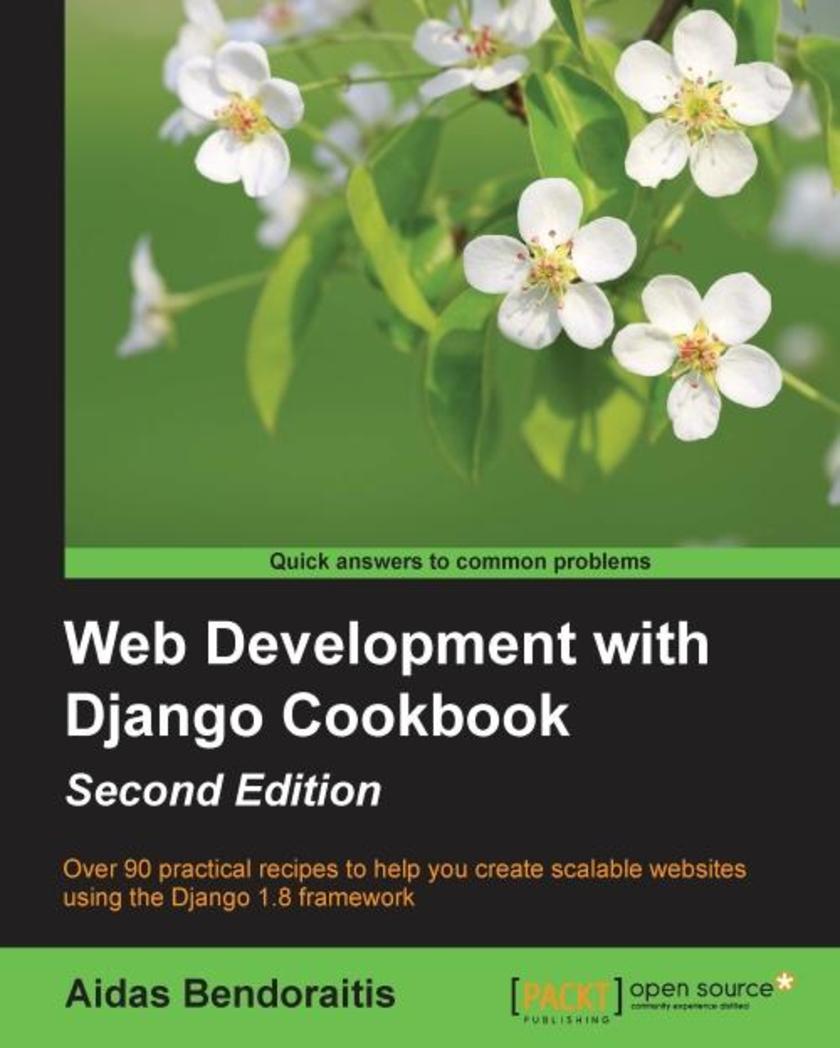
Web Development with Django Cookbook - Second Edition
¥90.46
Over 70 practical recipes to help you create scalable websites using the Django 1.8 frameworkAbout This BookThis is the latest book on the market that will help you take advantage of the new features added to Django 1.8This book consists of recipes of varying complexities to help you create multilingual, responsive, and scalable websites with DjangoThis updated edition teaches you major Django functions and will help you improve your skills by developing models, forms, views, and templatesWho This Book Is ForThis book is for intermediate-level and professional Django users who need to build projects that are multilingual, functional on devices of different screen sizes, and that scale over a period of time. If you have created websites with Django but you want to sharpen your knowledge and learn some good approaches to different aspects of web development, you should definitely read this book.What You Will LearnGet started with the basic configuration necessary to start any Django projectBuild a database structure out of reusable model mixinsManage forms and views and get to know some useful patterns that are used to create themCreate handy template filters and tags that you can reuse in every projectIntegrate your own functionality into the Django CMSManage hierarchical structures with MPTTImport data from local sources and external web services as well as exporting your data to third partiesImplement a multilingual search with HaystackTest and deploy your project efficientlyIn DetailDjango is a web framework that was designed to strike a balance between rapid web development and high performance. It has the capacity to handle applications with high levels of user traffic and interaction, and can integrate with massive databases on the backend, constantly collecting and processing data in real time.Through this book, you'll discover that collecting data from different sources and providing it to others in different formats isn't as difficult as you thought. It follows a task-based approach to guide you through all the web development processes using the Django framework. We’ll start by setting up the virtual environment for a Django project and configuring it. Then you’ll learn to write reusable pieces of code for your models and find out how to manage database schema changes using South migrations. After that, we’ll take you through working with forms and views to enter and list data. With practical examples on using templates and JavaScript together, you will discover how to create the best user experience. In the final chapters, you'll be introduced to some programming and debugging tricks and finally, you will be shown how to test and deploy the project to a remote dedicated server.By the end of this book, you will have a good understanding of the new features added to Django 1.8 and be an expert at web development processes.Style and approachEvery chapter consists of practical examples and a mix of basic and advanced recipes that will guide you through the entire web development process, starting from project configuration and taking you right through to deployment.
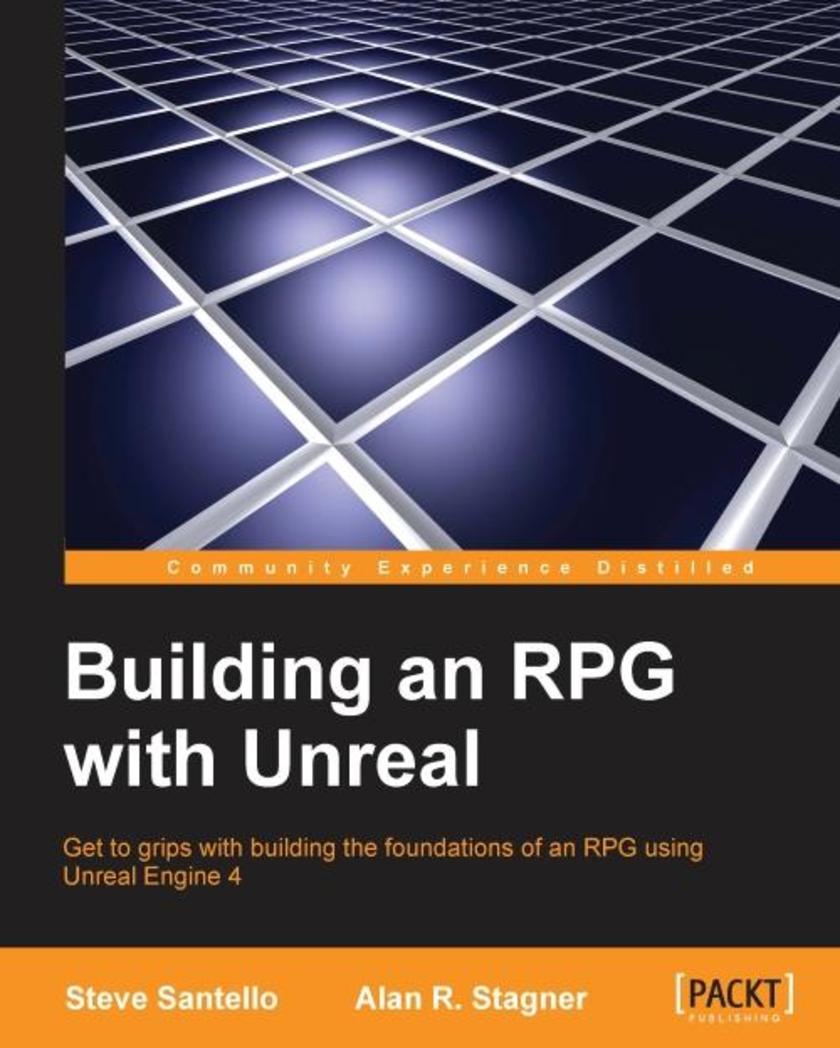
Building an RPG with Unreal
¥90.46
Get to grips with building the foundations of an RPG using Unreal Engine 4About This BookUtilize a mixture of C++, Blueprints, and UMG to create a role playing game (RPG) efficientlyCreate reusable code chunks and elements that can easily be integrated into other gamesA cost effective, step-by-step guide to building and customizing an entire framework for your RPGWho This Book Is ForIf you are new to Unreal Engine and always wanted to * an RPG, you are this book’s target reader. The lessons assume you understand the conventions of RPG games and have some awareness of the basics of using the Unreal editor to build level.What You Will LearnProgram gameplay elements in C++ in UnrealCreate custom game data for entities such as players and enemiesCreate a turn-based combat engineDesign menu systems and blueprint logicCreate an NPC and dialog systemIntegrate equipment and itemsDevelop the foundations of a saving and loading systemIn DetailNow that Unreal Engine 4 has become one of the most cutting edge game engines in the world, developers are looking for the best ways of creating games of any genre in the engine. This book will lay out the foundation of creating a turn-based RPG in Unreal Engine 4.The book starts by walking you through creating a turn-based battle system that can hold commands for party members and enemies. You’ll get your hands dirty by creating NPCs such as shop owners, and important mechanics, that make up every RPG such as a currency system, inventory, dialogue, and character statistics. Although this book specifically focuses on the creation of a turn-based RPG, there are a variety of topics that can be utilized when creating many other types of genres.By the end of the book, you will be able to build upon core RPG framework elements to create your own game experience.Style and approachYou will follow a series of lessons detailing the elements that contribute to an RPG. By the end of the book, you will have considerably leveled up your ability to make your own game




 购物车
购物车 个人中心
个人中心



